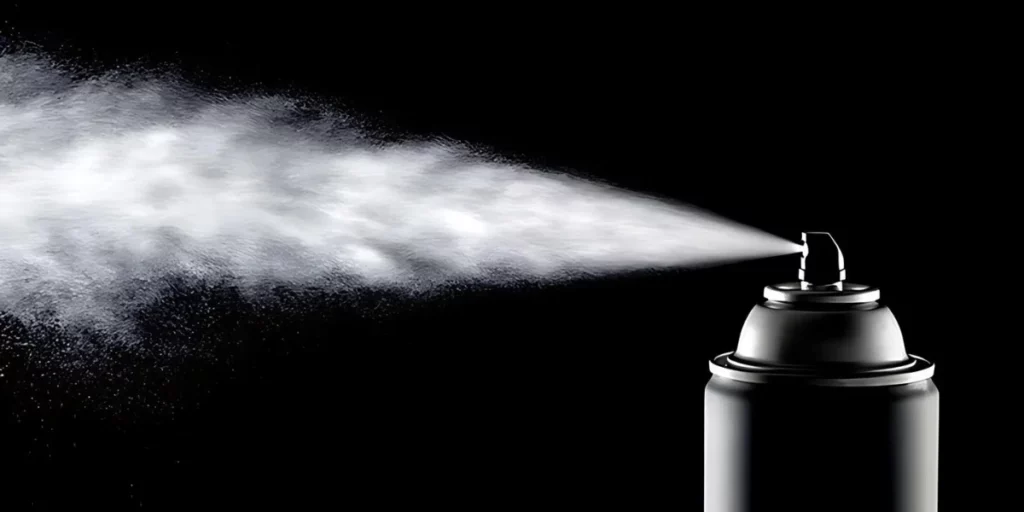Understanding Oil and Acrylic Varnish
Grasping the essential differences and uses of oil and acrylic varnishes can help bring your artwork to life while ensuring it stands the test of time.
Properties and Uses
Oil Varnish:
Oil varnish is made from natural or synthetic resins dissolved in oil. Renowned for its protective qualities, it forms a hard, durable shield over oil paintings. This type of varnish helps protect the artwork from dust, dirt, and even those rogue fingerprints from enthusiastic admirers. It’s also known for enhancing the depth and vibrancy of colors, giving paintings that extra ‘pop’.
Acrylic Varnish:
Acrylic varnish, on the other hand, is usually water-based, making it quick to dry and easy to clean up – ideal for the impatient artist! It produces a flexible and clear finish that can withstand humid conditions without becoming sticky. Moreover, it’s highly resistant to chemical reactions, offering a layer of defense against environmental damage.
| Property | Oil Varnish | Acrylic Varnish |
|---|---|---|
| Composition | Natural/Synthetic Resins | Water-based |
| Drying Time | Longer | Quick |
| Flexibility | Brittle over time | Remains flexible |
| Resistance | Good but reacts with environmental changes | Excellent, stable chemical resistance |
| Usage | Primarily on oil paintings | For acrylic as well as oil paintings |
Differences Between Oil and Acrylic Varnish
Navigating the nuanced differences between oil and acrylic varnish can save you a lot of headaches – and potentially your masterpiece.
Aging and Brittleness:
Oil varnishes, like their oil paint counterparts, tend to become brittle as they age. Have you ever gazed at a 100-year-old oil painting and noticed the cracks? It’s part of their charm, but it’s also a sign of brittleness developing over time (Just Paint). Acrylic varnish stays flexible at normal indoor temperatures, providing better resistance to cracking.
Chemical Resistance and Longevity:
Acrylic varnish resists environmental dangers like oxygen and water, reducing aging. Some claim properly applied acrylic varnish might keep your artwork looking fresh for centuries – possibly even outliving the artist themselves. Oil varnish also offers excellent protection but is more susceptible to interaction with environmental changes.
| Aspect | Oil Varnish | Acrylic Varnish |
|---|---|---|
| Brittleness | Increases over time; prone to cracking | Remains flexible unless very cold |
| Chemical Resistance | Moderate | High; slow aging indoors/outdoors |
| Longevity | Lasts long but ages chemically | Potentially lasts centuries |
Colour and Clarity:
Oil varnishes are renowned for enhancing depth and vibrancy of oil paintings. In contrast, acrylic varnishes provide clear, non-yellowing protection, although, in some cases, they can be susceptible to yellowing over time due to the binding agent used.
To sum up, consider your medium, desired protection level, and aesthetic preferences when deciding between oil and acrylic varnish. Each has its unique charm and benefits. If you still find yourself in a pickle, a little experimentation goes a long way – after all, artists are known for thinking outside the box!
Benefits of Varnishing Artwork
Varnishing is an essential finishing touch that offers several benefits for preserving and protecting your masterpieces. Here, we’ll delve into the protective effects and the preservation aspects of using oil and acrylic varnish.
Protective Effects
Varnishing your artwork acts as a non-porous shield, protecting it from environmental nuisances like dust, dirt, and other pollutants (Chuck Black Art). This barrier helps maintain the vibrant colours and intricate details of your paintings, keeping them looking fresh and lively. Imagine it as the superhero cape your artwork deserves!
| Varnish Type | Protection Offered |
|---|---|
| Oil Varnish | Dust, Dirt, Pollutants |
| Acrylic Varnish | UV Light, Yellowing, Physical Damage |
Preservation of Artwork
Beyond offering a protective layer, varnishing also plays a critical role in the long-term preservation of your artwork. A removable varnish allows you to clean your piece and apply a fresh coat over time without damaging the original paint (CREATEFUL ART).
Furthermore, varnishing can significantly extend the life of your art pieces, safeguarding them against UV light, which can cause colours to fade, and physical damage, like scratches. For oil paintings, it’s advisable to wait for the artwork to cure fully—typically between 1-4 weeks—before applying varnish.
| Painting Type | Varnish Waiting Time |
|---|---|
| Oil Painting | 1-4 weeks |
| Acrylic Painting | 24 hours |
Varnishing’s preservation power is no joke. Whether dealing with oil or acrylic, giving your artwork the star treatment is worth the wait.
Using oil and acrylic varnish effectively can make your artwork shine brighter and last longer. Whether you’re a Michelangelo in the making or just want to preserve those vivid hues, varnishing is your go-to strategy. Happy painting!
Choosing the Right Varnish
Selecting the perfect varnish for your masterpiece can be as tricky as herding cats. The right varnish not only adds a final flourish but also protects your work from the harsh realities of the world (think dust and errant coffee splashes). Let’s delve into what factors to consider and the differences between glossy, matte, and satin finishes.

Factors to Consider
Before you dive headfirst into varnishing, here are the key factors to keep in mind:
- Type of Paint: Oil and acrylic varnishes are formulated differently. Make sure you choose a varnish that is appropriate for your painting medium.
- Drying Time: Oil paintings require a longer drying period before varnishing compared to acrylics. For oil paintings, it’s recommended to wait at least 1-2 weeks, possibly 3-4 weeks, to ensure the paint is fully cured. Acrylic paintings can be varnished within 24 hours.
- Protection: Look for varnishes with UV resistance and acid-free properties to prevent your colours from fading and your painting from turning into an abstract version of its former self.
- Ease of Application: Consider whether you prefer brush-on or spray-on varnishes. Spray varnishes, such as the Ghiant Art Collection Solvent Based Varnish Spray, can offer more even coverage and are less likely to leave brush marks.
Here’s a handy table summarising these factors:
| Factor | Oil Varnish | Acrylic Varnish |
|---|---|---|
| Drying Time | 1-2 weeks (up to 4 weeks) | 24 hours |
| UV Protection | Essential for longevity | Essential for vibrancy |
| Application | Brush-on or spray | Brush-on or spray |
| Reapplication | Remove and reapply if needed | Remove and reapply if needed |
Glossy, Matte, and Satin Finishes
The finish of your varnish can dramatically alter the look of your artwork. Here’s a breakdown of the three main types of finishes:
Glossy Finish:
- Properties: Reflective and shiny, enhances color vibrancy.
- Use: Ideal for bright, bold paintings where you want the hues to stand out like a peacock in a pigeon coop.
- Consideration: Can be more prone to showing imperfections and dust.
Matte Finish:
- Properties: Non-reflective, subtle, and softens colors.
- Use: Best for moody, understated pieces where the artwork speaks softly but carries a big stick.
- Consideration: Can slightly reduce colour intensity and might appear flat if not balanced properly.
Satin Finish:
- Properties: Happy medium between glossy and matte, offering a low sheen.
- Use: Suitable for artworks needing a balanced look, neither too shiny nor too dull.
- Consideration: Offers the best of both worlds but might lack the dramatic flair of full gloss or the subtlety of full matte.
Application Techniques
Knowing how to apply an oil or acrylic varnish is an art in itself. Done right, it’ll add the final touch of brilliance to your masterpiece. Below are the essential steps and tips to help you achieve a flawless finish.
How to Apply Varnish
Applying varnish is not as simple as slapping some liquid on your artwork and calling it a day. Here are some key steps:
- Preparation: Ensure your artwork is completely dry. For oil paintings, this could take a minimum of 1-2 weeks, or up to 3-4 weeks depending on various factors like paint type and layers used (Chuck Black Art). For acrylic paintings, wait at least 24 hours.
- Clean Surface: Dust off any particles on the painting with a soft cloth to avoid embedding dirt into the varnish.
- Test Spot: Always do a test section on a small, inconspicuous area to ensure compatibility.
- Brush or Spray: Depending on the type of varnish you’re using, choose the appropriate application method. Aerosols like those from Winsor & Newton provide an even coat with minimal brushstrokes, while brushes give you more control.
- Application: Apply the varnish in thin, even layers. For brushing, use long, smooth strokes and ensure you cover the entire surface uniformly. Multiple thin coats are better than one thick coat.
- Drying Time: Allow sufficient time for each coat to dry before applying the next. Always follow the manufacturer’s guidelines for drying times.
Tips for a Smooth Finish
Achieving a flawless finish isn’t rocket science, though it sometimes feels like it. Here are some tips for making your artwork shine like the star it is:
- Environment: Apply varnish in a dust-free, well-ventilated area to avoid dust settling on the varnish while it’s drying.
- Temperature Control: Ensure the room temperature is consistent. Extremes in temperature can affect the drying and finish of the varnish.
- Proper Tools: Use high-quality brushes or spray nozzles. Low-quality tools can leave behind brush hairs or uneven coverage.
- Level Surface: Place your artwork flat on a level surface to prevent drips.
- Avoid Overworking: When using a brush, avoid over-brushing as it can leave marks. Apply a quick, even coat and let it self-level.
- Wet Edge: Maintain a wet edge to avoid lap marks. This is crucial to achieving a uniform finish.
Let’s not forget why we varnish in the first place—it’s about both protection and aesthetics. Varnish like Krylon UV Resistant Clear Coating Matte helps shield your artwork from UV rays and environmental damage.
Longevity and Maintenance
Impact on Artwork
Creating art is all about making sure those masterpieces stand the test of time. Understanding the impact of oil and acrylic varnish on artwork is crucial for any artist looking to preserve their pieces.
Oil Varnish:
- Brittleness: Oil varnishes, much like a centenarian’s bones, tend to become brittle over time, making them susceptible to cracking.
- Yellowing: Oils aren’t just for cooking; they can yellow over time due to the binder aging faster than the pigment, kind of like a bad tan.
Acrylic Varnish:
- Flexibility: Acrylic varnishes are more flexible at normal indoor temperatures, bending without breaking, which keeps them crack-free. Just don’t throw them in the freezer; they can become brittle in low temperatures.
- Slow Aging: Acrylics are designed to resist chemical changes from oxygen and water, meaning they age gracefully indoors and survive outdoor exhibitions longer.
| Varnish Type | Brittleness | Yellowing | Flexibility | Aging |
|---|---|---|---|---|
| Oil | High | Moderate | Low | Moderate |
| Acrylic | Low (Indoors) | Low | High | Slow |
Removal and Reapplication
Sometimes, our good ol’ varnish needs a refresh. Whether it’s a protective overhaul or just a little spa treatment for the artwork, understanding the removal and reapplication process is important.
Removing Oil Varnish:
- Identify the Varnish: Knowing the type of oil varnish ensures you use the right solvent.
- Choose Solvent: A mild solvent, usually one recommended for the specific type of varnish, is applied carefully.
- Gently Rub: Using cotton swabs, gently rub in small areas to avoid damaging the paint layer.
- Replace with Fresh Coat: Reapply the chosen oil varnish to retain protection.
Removing Acrylic Varnish:
- Acrylic Removal Solution: Use an acrylic varnish remover suitable for the type of acrylic varnish applied previously.
- Application: Apply the remover with a soft cloth and gently rub in circular motions.
- Wipe Clean: Make sure the surface is wiped clean before reapplying new varnish.
Reapplication ensures the artwork stays as fresh as the day it was created. Choosing the right varnish and applying it correctly can extend the life of any artwork.
No matter what finish you select, the key is to match it with the style and personality of your artwork. So, grab your varnish, and give your masterpiece the finishing touch it deserves!


